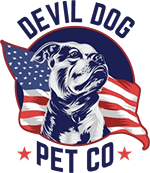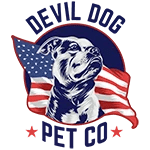Aggression often manifests as growling, snapping, or biting. Dog owners, trainers, and researchers have been seeking ways to understand and manage this behavior, as it significantly impacts the relationship between dogs and their human counterparts. The factors contributing to aggressive tendencies in dogs are multifaceted, ranging from genetic predispositions to external environmental triggers.
To address this issue effectively, it is essential to identify the different types of aggression exhibited by dogs and pinpoint the root causes behind such behavior. This includes recognizing behavioral patterns and categorizing aggression into various classifications, such as territorial, fear-based, and dominance aggression. By doing so, appropriate intervention strategies can be developed, ultimately improving the well-being of dogs, their owners, and society.
Understanding dog aggression requires an examination of the interplay between nature and nurture. Delving into canine psychology, training methods, and environmental factors will ensure a more comprehensive grasp of this complex subject. This knowledge will better equip individuals to mitigate aggression in dogs by promoting responsible ownership practices, implementing effective training techniques, and addressing the dog's psychological and physical needs.
Causes of Aggression
Genetics
Some breeds of dogs are more predisposed to aggressive behavior due to their genetic makeup. Selective breeding for specific traits, such as guarding or hunting, can contribute to aggressive tendencies in certain breeds. However, it's important to note that not all individuals within a breed will exhibit these behaviors, as genetics are only one factor at play.
Medical Conditions
Aggression in dogs can be a symptom of an underlying medical condition. Pain, thyroid problems, neurological disorders, and hormonal imbalances can contribute to aggressive behavior. When a dog is experiencing discomfort or pain, it may lash out, making it essential to consult a veterinarian if your dog exhibits sudden or unexplained aggression.
Environment
A dog's environment plays a significant role in their behavior. Factors such as living conditions, exposure to violence, or lack of appropriate mental stimulation can contribute to aggression. Ensuring your dog has a suitable living space, opportunities for exercise, and mental challenges can help prevent frustration that may lead to aggression.
Socialization
Proper socialization is crucial for dogs to develop into well-adjusted, non-aggressive individuals. Puppies should be introduced to various people, animals, and situations in a controlled and positive manner. Inadequate socialization can lead to a dog becoming fearful or defensive when presented with new or unfamiliar situations, increasing the likelihood of aggression. Early and ongoing socialization can help mitigate these risks and promote a healthy, stable temperament in your dog.
Types of Aggression
Fear-Based Aggression
Fear-based aggression in dogs occurs when they feel threatened or cornered. This type of aggression is a defensive response, often displayed when a dog is afraid of something or someone. It is crucial to recognize this type of aggression early on and address it through proper socialization, training, and desensitization techniques.
Territorial Aggression
Territorial aggression is when a dog claims a particular area, such as their home or yard, and becomes aggressive toward others approaching or entering that territory. This behavior may include barking, growling, and even biting. To manage territorial aggression effectively, it is essential to establish boundaries and consistently reinforce them through positive reinforcement and training.
Resource Guarding
Resource guarding refers to a dog's behavior when it becomes aggressive to protect a valuable item, such as food, toys, or even a person. Signs of resource guarding include growling, snapping, or biting when someone approaches or tries to take away the valued item. Training focusing on "drop it" commands and providing plenty of resources can help reduce resource-guarding behaviors.
Dominance-Based Aggression
Dominance-based aggression occurs when a dog feels the need to establish its position in the hierarchy among other dogs or humans. This type of aggression may manifest through growling, snarling, or biting, especially when the dog believes their status is being challenged. Early socialization, obedience training, and establishing a clear and consistent leadership role can help manage and prevent dominance-based aggression.
Redirected Aggression
Redirected aggression occurs when a dog is agitated or stimulated by a situation, and it cannot act directly toward the source of its frustration. As a result, they may lash out at a nearby person or animal. Managing a dog's environment, increasing exercise, and providing mental stimulation may help reduce redirected aggression. In cases where aggression poses a risk, seeking professional assistance from a veterinarian or professional dog trainer is recommended.
Recognizing and Assessing Aggressive Behaviors
Body Language
Recognizing aggressive behavior in dogs starts with understanding their body language. A dog displaying aggression may exhibit the following behaviors:
- Raised hackles: The hair along the dog's spine stands up, indicating arousal and a potential threat.
- Stiff posture: The dog's body becomes rigid, and its tail may be raised or lowered.
- Baring teeth: The dog may show its teeth and snap or bite.
- Direct stare: A focused stare, often accompanied by a furrowed brow, is a sign of aggression.
It is essential to observe the context these signals appear in for a clear interpretation, as individual dogs' body language may differ.
Vocalization
Another way to assess aggression is through vocalization. Dogs may communicate their aggressive intent through various sounds, including:
- Growling: A low, rumbling sound indicating a warning or a threat.
- Snarling: A combination of growling and baring teeth.
- Barking: Aggressive barking tends to be louder, sharper, and often more repetitive than normal barking.
Listen to the tone and intensity of these vocalizations to better determine a dog's aggression level.
Severity Scale
To better understand and compare aggressive behaviors, it can be helpful to use a severity scale:
- Mild aggression: This may include growling, low-intensity barking, and raised hackles without any physical contact.
- Moderate aggression: This stage involves snapping, lunging, or displaying teeth without inflicting harm.
- Severe aggression: This level entails biting or attacking with the intent to harm or injure.
Keep in mind that some dogs may escalate from mild to severe aggression quickly. It is crucial to act accordingly to prevent injuries and ensure everyone's safety.
Prevention and Early Intervention
Preventing aggression in dogs starts with proper socialization and training in their early life. It is crucial to expose puppies to various environments, people, and other animals during their sensitive socialization period – between 3 and 14 weeks of age. This exposure helps them develop confidence and inhibits the development of fear-based aggression.
Consistent, positive reinforcement-based training is essential in teaching dogs desired behaviors and managing potential aggression triggers. Avoid using punishment-based techniques, as these can exacerbate aggressive tendencies. Instead, opt for reward-based methods that build trust between the dog and its owner.
Establishing a regular routine and meeting the dog's physical and mental needs are vital for preventing aggression. Provide a balanced diet, daily exercise, and mental stimulation through play or training to keep dogs content and well-adjusted.
In some cases, aggression may be rooted in medical issues or discomfort. Regular veterinary check-ups and addressing any health problems as soon as they arise are crucial steps in preventing aggression due to pain or illness.
 If early signs of aggression are noticed, seeking professional help from an experienced dog trainer, or behaviorist should be a priority. Timely intervention can be incredibly effective in preventing further escalation of aggressive behavior and ensuring the safety of the dog and those around it. Remember that every dog is an individual, and a tailored approach based on the specific case and the dog's history is key in addressing and managing aggression.
If early signs of aggression are noticed, seeking professional help from an experienced dog trainer, or behaviorist should be a priority. Timely intervention can be incredibly effective in preventing further escalation of aggressive behavior and ensuring the safety of the dog and those around it. Remember that every dog is an individual, and a tailored approach based on the specific case and the dog's history is key in addressing and managing aggression.
Management of Aggressive Dogs
Behavior Modification
Behavior modification is key in managing aggressive dogs. It involves gradually changing the dog's response to specific triggers. Desensitization and counterconditioning are two commonly used methods:
-
Desensitization helps the dog become less reactive to triggers by gradually exposing them to less intense versions of the trigger. For example, if the dog reacts aggressively to strangers, it can be exposed to the stranger from a distance, gradually decreasing the distance as the dog becomes more comfortable.
-
Counterconditioning involves changing the dog's emotional response to the trigger. For example, when the dog sees a stranger and does not react aggressively, it can be rewarded with treats or praise, reinforcing the calm behavior instead of aggression.
Training Techniques
In addition to behavior modification, appropriate training techniques are essential for managing aggressive dogs. Some effective techniques include:
-
Obedience training: Teaching basic commands like "sit," "stay," and "leave it" establishes a foundation of control and communication between the owner and the dog.
-
Clicker training: This positive reinforcement method uses a clicker to mark the exact moment the dog performs a desired behavior. The click is then followed by a reward, which helps shape the dog's behavior.
-
Muzzle training: A properly fitted muzzle can prevent bites during training sessions. It is important to introduce the muzzle gradually and pair it with positive reinforcement.
Despite these strategies, aggression in dogs can be complex and sometimes require professional help. Therefore, it might be necessary to seek assistance from a qualified behaviorist or trainer with experience in dealing with aggression.
Working With a Professional
A qualified dog behaviorist or trainer can provide invaluable guidance and support in managing and reducing aggressive behaviors. One of the first steps a professional takes is to assess the dog's behavior and its underlying causes. This may involve observing the dog in different situations, gathering information from the owner, and considering factors such as breed, upbringing, and environment. This comprehensive evaluation helps in designing a customized training program for the dog. The training program typically involves behavior modification techniques, such as positive reinforcement, desensitization, and counter-conditioning.
Engaging a professional also ensures that necessary safety measures are in place during the training process. Dog aggression can be unpredictable and potentially dangerous, so it is crucial to have a knowledgeable handler who knows how to manage and prevent any harmful incidents. Dealing with canine aggression can be an emotionally taxing experience. Therefore, working with a professional can provide much-needed support and reassurance for dog owners.






